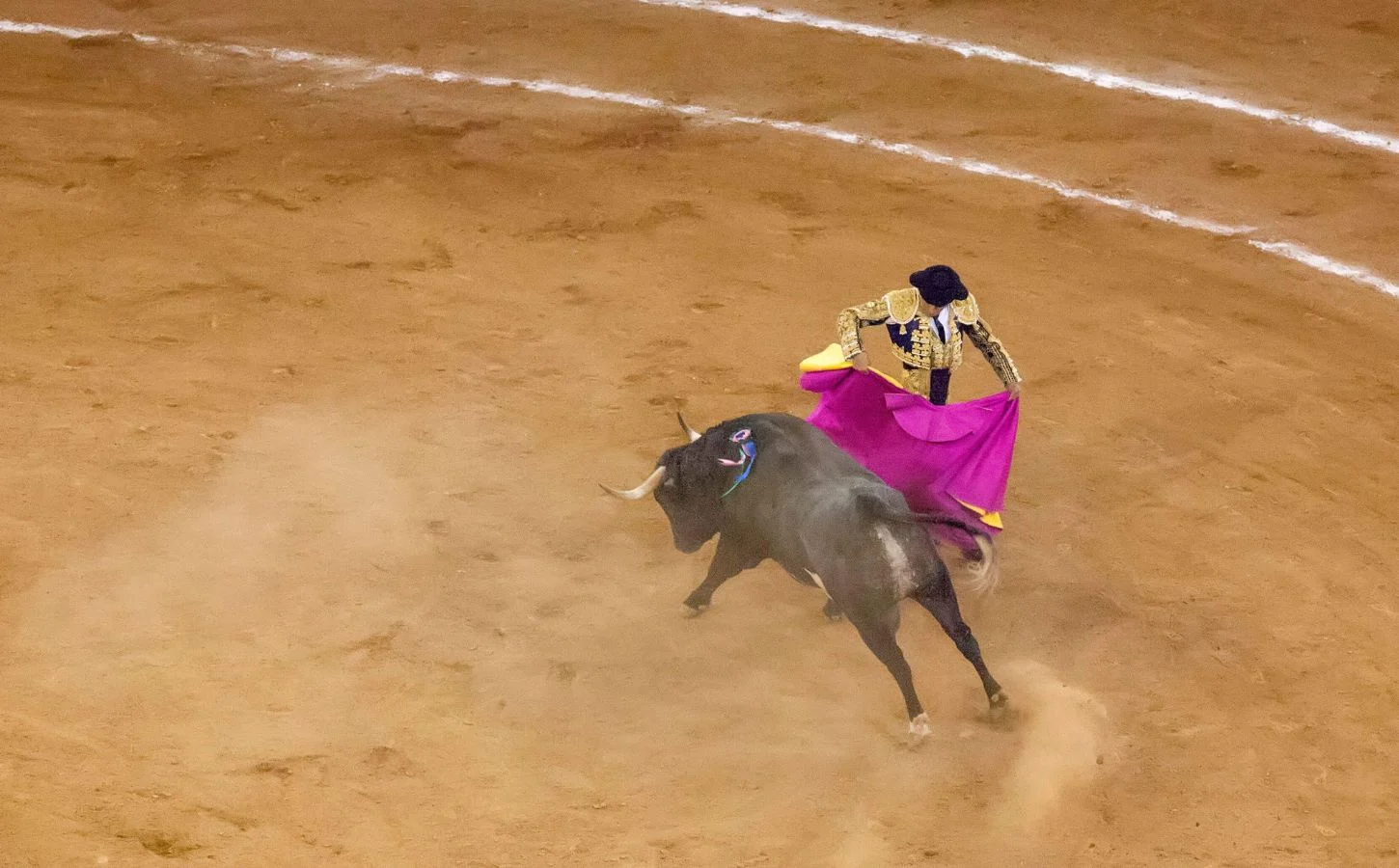
Bullfighting Has Returned To Mexico City – But It Could Still Be Banned
For almost two years, bullfighting had been suspended in Mexico City

After a two-year pause, bullfighting returned to Mexico City in January 2024. At the Plaza de Toros in Mexico City, six bulls were killed in the city’s first corrida de toros since 2022. More than 40,000 people descended on the world’s largest bullring to watch the grim spectacle, while animal activists protested outside. Further attempts to ban the practice have so far been thwarted, though legal efforts continue.
Does Mexico allow bullfighting?
On Sunday, January 28, Mexico City held its first bullfight since May 2022.
For almost two years, the practice – which is widely regarded as extremely cruel – had been on hold after a judge ordered an indefinite suspension in response to a lawsuit filed by animal rights activists. Last month, the country’s Supreme Court revoked the decision and allowed bullfighting to return.
Days later, a judge ordered a new suspension until February 7. A hearing was due to take place to address animal welfare concerns. This was quickly undone, however, and further corridas have taken place since.
Despite the return of bullfighting to the Mexican capital, legal battles continue. Animal rights activists have filed new suits. Meanwhile, Mexico’s President Andrés Manuel López Obrador said in December 2023 that he would hold a referendum to settle the future of bullfighting. Without providing specific details, he suggested this could take place “even if the legal process is ongoing.”
Five of Mexico’s 31 states have already imposed bans. The most recent addition to the list was Sinaloa in 2022 following unanimous agreement in congress.

Mexican bullfighting is a colonial import
Mexico has more bullrings than any other country, besides Spain. It was Spanish colonizers who first imported bullfighting more than 500 years ago. The first bullfight in Mexico took place in August 1529, eight years after the Spanish, led by Hernán Cortés, conquered and colonized the Aztec Empire and other indigenous states.
Debates around bullfighting in Mexico are therefore complicated by colonial questions. While some see the practice as part of their cultural heritage, others associate bullfighting with the brutal colonization by the Spanish. Many simply despise the needless cruelty and the violence it encourages.
In any case, a survey from 2013 showed that three quarters of Mexicans are in favor of a ban on bullfighting in the country.
Where else is bullfighting legal?
Mexico is one of only eight countries where bullfighting still takes place. The others are Spain, Portugal, France, Colombia, Venezuela, Peru, and Ecuador. In Portugal, it is illegal to kill bulls in the arena but they are still tortured and slaughtered shortly after.
In Colombia, a bill to ban bullfighting is progressing slowly through the House of Representatives. The House passed one bill last year by 50 votes to 4, but needs to pass two more debates to succeed. Progress has stalled. Ahead of the first vote, polls showed some 85 percent of Colombians wanted a ban on bullfights.
Bullfighting is illegal in countries including Argentina, Cuba, and Italy. Some Spanish cities have also banned bullfighting. The first “anti-bullfighting city” was Tossa de Mar in the Autonomous Community of Catalonia. The city passed a declaration in 1989 to outlaw the practice.

Is bullfighting an art?
Bullfighting is not a sport or a fight because only one participant willingly takes part. The numbers speak for themselves. Approximately 250,000 bulls are killed in bullfights every year. In contrast, around 500 matadors have been killed in three centuries.
Before the matador appears, the bull is subjected to stressful transport and forced into the arena. The bull is then further provoked with large colorful capes before picadors (men on horseback) pierce the bull’s neck with a barbed lance. Only at this point does the brave matador enter to start the “fight.”
Fans of bullfighting sometimes liken the practice to an art. However, it is more appropriate to call it a slaughter.
Ernest Hemingway famously said that “Bullfighting is the only art in which the artist is in danger of death.” As well as wrong – some artists do risk death while performing – this statement misses the point. Bullfighting is not a creative pursuit but a destructive one, a ritual slaughter of which torture and death are the only real product.
Source: https://plantbasednews.org/culture/law-and-politics/bullfighting-returned-mexico-city/